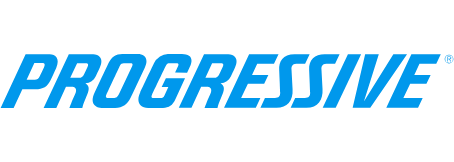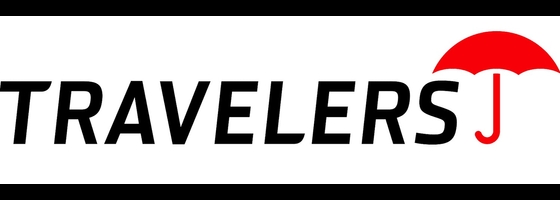- New car replacement and better car replacement coverage offered.
- Strong J.D. Power customer satisfaction rating.
Our evaluations and opinions are not influenced by our advertising relationships, but we may earn a commission from our partners’ links. This content is created independently from TIME’s editorial staff. Learn more about it.
When you buy a new car, the last thing you want is to get into an accident. But even the most vigilant drivers can find themselves with a totaled car—whether they were responsible for the incident or another driver caused it. One of the first things to do after such an accident is to file a claim with your car insurance provider. But what if you owe more on your loan than the amount your insurer will pay out for your totaled car?
That is where gap (general asset protection) insurance comes into play. This optional coverage helps bridge the gap between your car’s value and the amount you owe on your loan. Without gap insurance, you’d be responsible for paying off your car loan even though your car is no longer driveable.
Pros and cons of gap insurance
Just like any type of insurance coverage, gap insurance has its pros and cons. Below are the most common.
| Pros | Cons |
|---|---|
No deductible | Additional cost |
Additional financial protection |
Benefits
Zero deductible
Unlike collision or comprehensive insurance, gap insurance does not have a deductible. That means you’ll be paid the full claim amount once approved, rather than having to pay a portion of the claim out of pocket.
Financial protection
Gap insurance provides extra financial protection if your car is stolen or involved in a serious accident that deems it a total loss. Rather than paying your outstanding loan balance out of pocket—either with savings or by continuing to make payments on a car you no longer have—gap insurance will pay the difference between your car insurance payout and the amount you still owe your auto lender.
Considerations
Vehicle depreciation
When you buy a new car, depreciation begins as soon as you drive off the lot. Kelley Blue Book reports that the average new car loses 20% of its value within the first year, and 60% of its value within five years. This makes gap insurance an important consideration if you’re buying a new car and plan on taking out a loan to finance the majority of the purchase.
Cost
Gap insurance adds an extra cost to car ownership. Whether you buy a policy from the dealership at the same time you buy your car or purchase a policy from an insurance company, you’ll be paying more than you would if you skipped the gap insurance coverage. However, if your car is stolen or totaled, that additional cost will prove to be money well spent.
How does gap insurance work?
Gap insurance kicks in if your car is involved in an incident in which the insurance company deems it totaled, and your car’s value as determined by the insurer is less than what you owe on your car loan.
When a car is deemed totaled, the insurer will send an assessor to determine its actual cash value. That’s the amount your car insurance will pay you in exchange for your vehicle. You can then use that money to purchase a replacement vehicle. But if the value of your car is less than your outstanding loan amount, you’ll be repaying a loan on a car you no longer have.
Gap insurance helps cover the difference between the car’s actual cash value and your outstanding loan balance. So if you owe $10,000 and your car’s value is $5,000, gap insurance will help cover that extra $5,000 so you don’t have to pay out of pocket.
What is and isn’t covered by gap insurance
Before deciding whether or not to purchase gap insurance, it’s important to understand exactly what is and is not covered. Make sure to ask yourself the following:
What does gap insurance cover?
As mentioned above, if your car is totaled or stolen, gap insurance covers the difference between your outstanding loan amount and the value of your car as determined by your insurer.
What does gap insurance not cover?
Although gap insurance can be the bridge between the amount you owe the lender and your car’s value, there are certain things it does not cover:
- Insurance deductible.
- Overdue car-loan payments.
- Extended warranties.
- Security deposits.
- Lease penalties.
- Previous loan or lease carryover balances.
- New car down payment.
Do you need gap insurance?
In general, gap insurance is a good idea if you financed the majority or all of your car purchase. For example, let’s say the purchase price was $30,000 and you financed $28,000. In this case, depreciation almost guarantees that your vehicle will be worth less than you owe on your loan soon after you purchase it.
Some other scenarios where you should consider gap insurance include:
- Your loan is longer than five years or 60 months.
- You leased your car rather than purchased it.
- The car model you chose is known to depreciate faster than other models.
Is gap insurance worth it?
The answer of whether gap insurance is worth it will vary from situation to situation. If, for example, you owe $10,000 on your loan and your car’s value is $8,000, you might choose to skip adding gap insurance if you have sufficient savings.
However, if you owe $10,000 on your loan and your car is worth $5,000, gap insurance may be a worthwhile purchase to prevent your needing to find the extra $5,000 out of pocket to repay your car loan.
How much does gap insurance cost?
The cost of gap insurance depends on where you purchase it. According to United Policyholders, gap insurance costs $500 to $700 in total if you purchase it from your lender at the same time you finance your car purchase. That cost can be rolled into your total loan payment, allowing you to pay it off over time. However, purchasing gap insurance this way means you’ll pay interest.
The cost of buying gap insurance through your auto insurance provider will depend on your insurer, though the average cost is around $60 per year. The best way to find out how much you’ll pay for gap insurance is to get quotes from several insurance providers and compare costs and coverage.
Best gap insurance providers
Most of the major insurance providers offer gap insurance coverage. The easiest way to get coverage is to contact your existing provider and add the coverage to your auto policy. However, if you’re shopping around for a car insurance provider, the following are some of the best that offer gap insurance.
Liberty Mutual

Liberty Mutual Gap Insurance
Liberty Mutual Gap Insurance
Pros & cons:
Pros:
Cons:
- Relatively low AM Best rating.
- Higher-than-average number of customer complaints.
Gap insurance from Liberty Mutual is offered in all 50 states and Washington, D.C. In addition to gap insurance, Liberty Mutual offers new car replacement and better car replacement coverage (described in more detail below), which gives you a solid selection of coverages to choose from to protect your car purchase. A gap insurance policy from Liberty Mutual costs an average of $50 annually.
Liberty Mutual came in 11th place in J.D. Power’s customer satisfaction study. However, its AM Best rating of A is slightly lower than some competitors, and the company has a higher-than-average number of customer complaints, according to the NAIC.
Nationwide

Nationwide Gap Insurance
Nationwide Gap Insurance
Pros & cons:
Pros:
- A+ AM Best rating.
Cons:
- Not available for cars older than six years.
- Higher-than-average number of customer complaints.
- Relatively low J.D. Power customer satisfaction rating.
If your car is six years old or newer, you can get a gap insurance policy through Nationwide in select states. The policy is an add-on to a Nationwide auto policy that includes comprehensive and collision insurance, and you must add it within six months of your car lease or purchase.
Nationwide’s gap insurance coverage costs an average of $43 per year. The company has a “Superior” AM Best rating of A+, which speaks to the company’s financial stability. However, Nationwide also has higher-than-average NAIC customer complaints and a relatively low J.D. Power customer satisfaction score when compared with other gap insurance providers.
Progressive

Progressive Gap Insurance
Progressive Gap Insurance
Pros & cons:
Pros:
- Strong J.D. Power customer satisfaction rating.
- A+ AM Best rating.
Cons:
- Lower-than-average number of customer complaints.
- Payouts capped at 25% of a vehicle’s actual cash value.
Progressive offers relatively affordable gap insurance coverage (which it calls loan/lease payoff coverage), though the company caps its payouts at 25% of a vehicle’s actual cash value. That cap won’t be a huge deal if the difference between your loan amount and your car’s value is 25% or less—but if it’s higher you will still be paying out of pocket to repay your car loan.
A gap insurance policy from Progressive costs around $49 per year. Progressive also has an impressive J.D. Power rating and a low number of complaints to the NAIC, which could help ease customers’ minds when choosing a provider. Like most others listed here, Progressive has an AM Best rating of A+, or Superior.
The Hartford

The Hartford Gap Insurance
The Hartford Gap Insurance
Pros & cons:
Pros:
- Discounts for AARP members.
- A+ AM Best rating.
- Strong J.D. Power customer satisfaction rating.
Cons:
- Relatively expensive annual premiums.
- Higher-than-average number of customer complaints.
You can buy gap insurance from The Hartford within 30 days of a car purchase or lease. The Hartford has notable discounts for AARP members and tailors its policies to older adults. If you fall in this category, The Hartford is well worth consideration.
The Hartford’s gap insurance policy is relatively expensive at $103, but the company’s high J.D. Power rating could make up for that high cost. When it comes to customer complaints, the NAIC reports that The Hartford has a higher-than-average number, which could be somewhat off-putting. AM Best gives The Hartford a “Superior” rating of A+.
Travelers

Travelers Gap Insurance
Travelers Gap Insurance
Pros & cons:
Pros:
- A++ AM Best rating.
- Lower-than-average number of customer complaints.
- Relatively affordable annual premiums.
Cons:
- Coverage not offered for private vehicle sales.
Travelers Insurance offers loan/lease gap insurance for vehicles that were purchased directly from a new car dealer. The policies are relatively affordable and can be added to a Travelers auto insurance policy. However, if you didn’t purchase your car from a dealer, you won’t be able to get gap insurance through Travelers.
At an average of $36 per year, Travelers’ gap insurance has the lowest cost on this list, making it ideal for those on a limited budget. Travelers’ NAIC complaint index score of 0.49 is also much lower than average, and the company has a high AM Best rating of A++. J.D. Power gives Travelers an average customer satisfaction rating of 854.
Alternatives to gap insurance
Although gap insurance is a good choice for many, it’s not the only option. The following coverages are alternatives to consider before taking out a gap insurance policy.
- New car replacement coverage: Some insurers offer this type of coverage, which reimburses your vehicle at its replacement cost rather than its actual cash value. So if your car is valued at $16,000 but it will cost $20,000 to replace it with a new car of similar size and condition, you’ll receive a higher payout. This coverage is helpful if your car is totaled while it’s still relatively new, but it comes at a higher cost than typical coverage which reimburses you at actual cash value.
- Better car replacement coverage: This type of coverage will pay out to replace a totaled vehicle with a newer or better model. The exact terms differ from insurer to insurer, and some insurers don’t even offer this coverage, so it’s worth asking your provider about before making a decision.
How do insurance companies decide if a car is totaled?
When your car is involved in a collision, your insurer will send an appraiser to determine how much it will cost to repair. If the repairs will cost a certain percentage of the vehicle’s worth, the insurance company will declare the car a total loss. At that point, you’ll receive a payout that equals your car’s actual cash value (less the deductible).
The percentage at which an insurer will deem a car totaled varies among states and among insurers. In general, the state will set a percentage at which a car must be declared a total loss, but individual insurers can choose to set their percentage lower. For example, if the state says that a car whose repairs will cost 80% of its value is a total loss, the insurer can set its limit at 75%.
TIME Stamp: Consider gap insurance if you plan on financing a new car
Gap insurance is worth considering if you’re buying a new car and plan on financing a large chunk of the purchase. For example, if the car’s purchase price is $30,000 and you finance $28,000, depreciation will mean that you’ll soon owe more on the car than it’s worth. If your car is stolen or totaled while you’re in this situation, you’ll still be liable for paying off the remainder of your car loan balance—even though you no longer have the car. Gap insurance helps bridge this gap and pay the difference between what you owe and what your car is worth.
Frequently asked questions (FAQs)
How can you get a gap insurance refund from a dealership?
If you purchased gap insurance from the dealership and rolled the cost into your total loan amount, you may not be able to cancel the policy. However, if you paid for it outright, you may be able to request a refund by contacting the dealership directly. If cancellation is permitted, you may need to pay a fee, and your refund will be prorated.
How do you know if you have gap insurance?
In most cases, you will know if you have gap insurance because it’s an additional purchase you would have decided to make. If you’re not sure, however, you can check the terms of your car loan or lease, or check with your car insurance provider.
How do you use gap insurance?
If your car is totaled and you owe more on your loan than the car is worth, your gap insurance will kick in. The process of making a claim will differ between insurers. You’ll need to check with the insurance company or the agent who sold you the policy to determine the steps you need to take to file a claim.
The information presented here is created independently from the TIME editorial staff. To learn more, see our About page.

